-
The Nechako in Summer
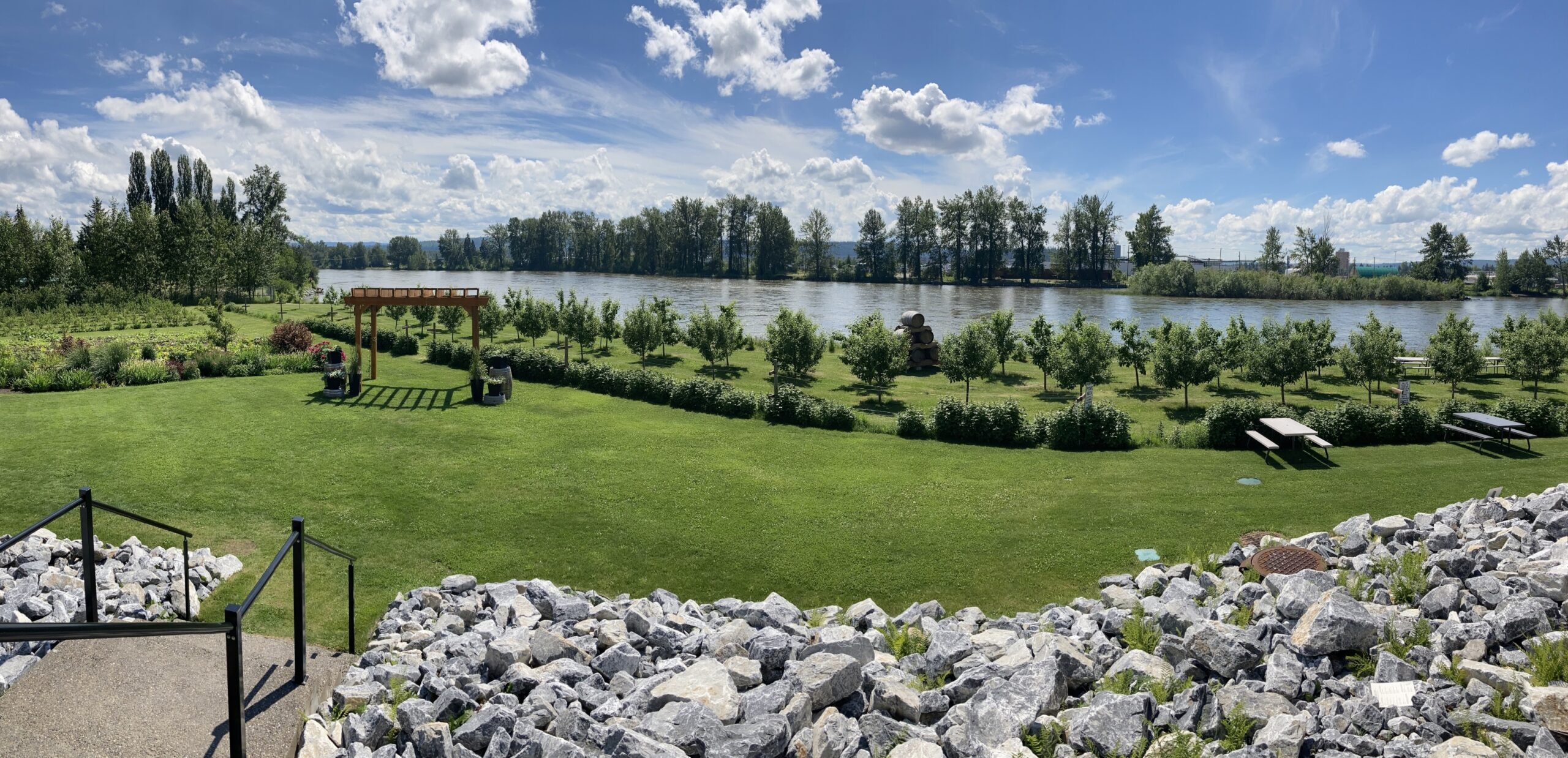 Banks of the Nechako (“Big River”) as seen from Northern Lights Estate Winery, Prince George. 07/22
Banks of the Nechako (“Big River”) as seen from Northern Lights Estate Winery, Prince George. 07/22 -
Fall Colors at River Ness
 Fluid outlines and saturated life in Inverness. 31/10/2015
Fluid outlines and saturated life in Inverness. 31/10/2015 -
Stubborn Arachnids
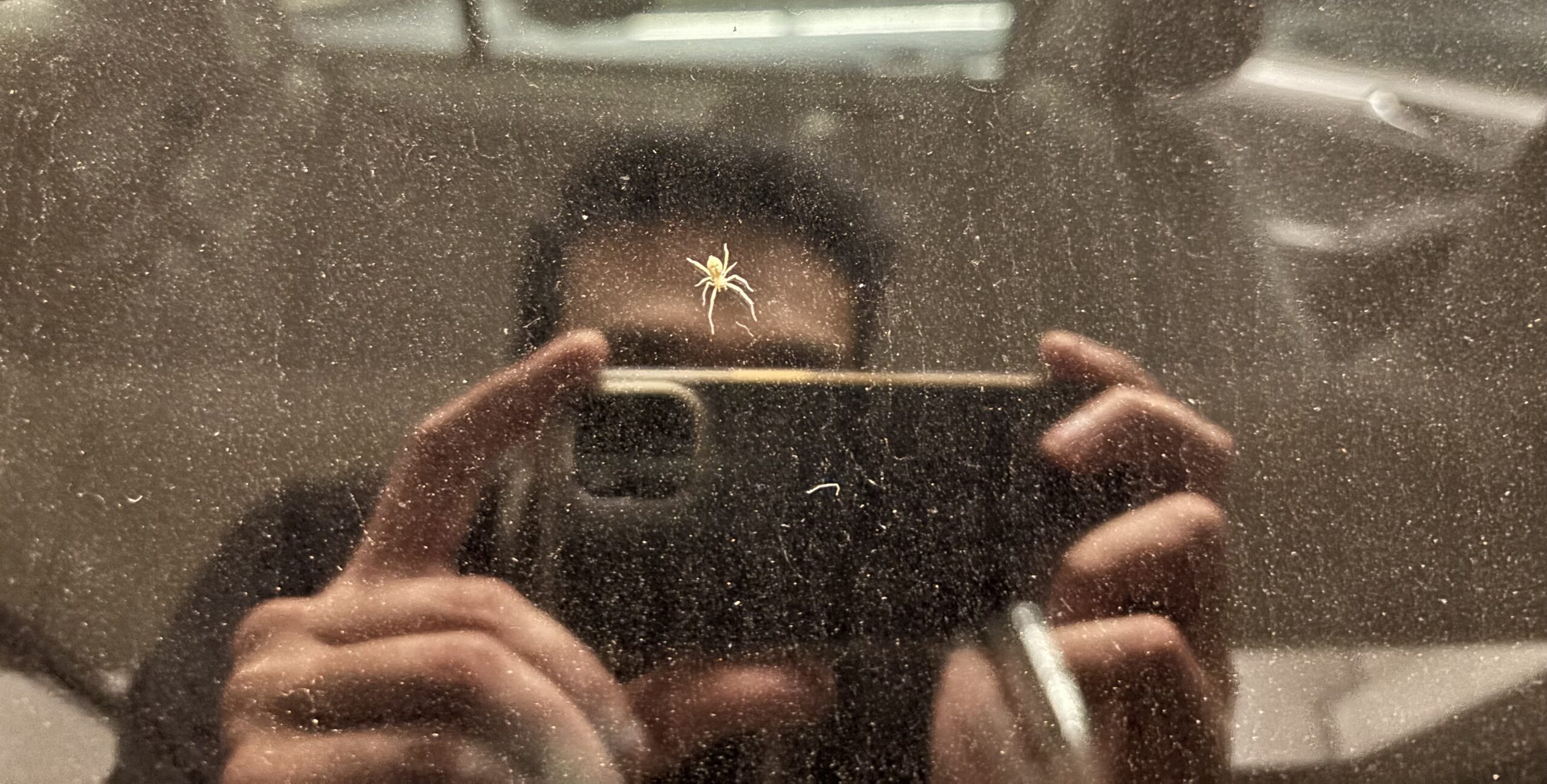 As you can tell, the travel keeps my vehicle super clean. 08/2025
As you can tell, the travel keeps my vehicle super clean. 08/2025Hitchhikers come in diverse shapes and sizes. This one remained on my rear window from one SkyTrain station to another. I guess we all sometimes prefer being chauffeured to taking transit.
Spiders are remarkably resilient, are they not?
I am going to cheat again on my one-a-week photo mission and share the shot below, of a web in my parents’ garden (taken perhaps a dozen years ago) that we had to remove in order to clean and repaint the fence. Once the work was done, the web was back up in a couple of days. Glistening in the same spot (when viewed at the right angles). The picture does not do its size justice – it was quite a ways from the fence, suspended six feet above the ground and ten feet between the shed and some small trees.
-
Autumnal Shades
Somewhere within the serene Britannia Conservation Area, Ottawa. Sunlit and Sunward. 12/10/2025
-
Night Life
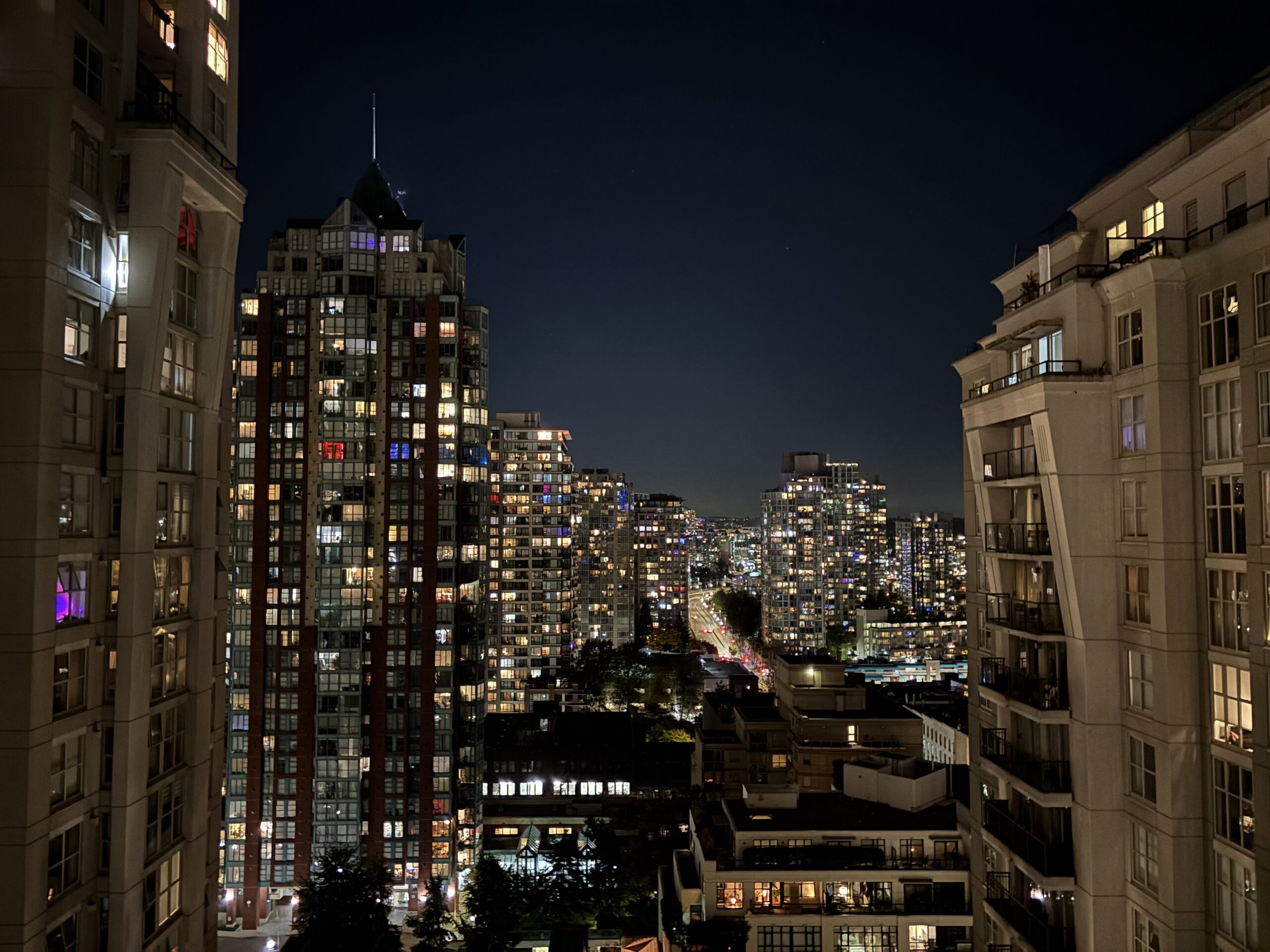 View from an apartment balcony, downtown Vancouver
View from an apartment balcony, downtown Vancouver -
East to West, Looking Down
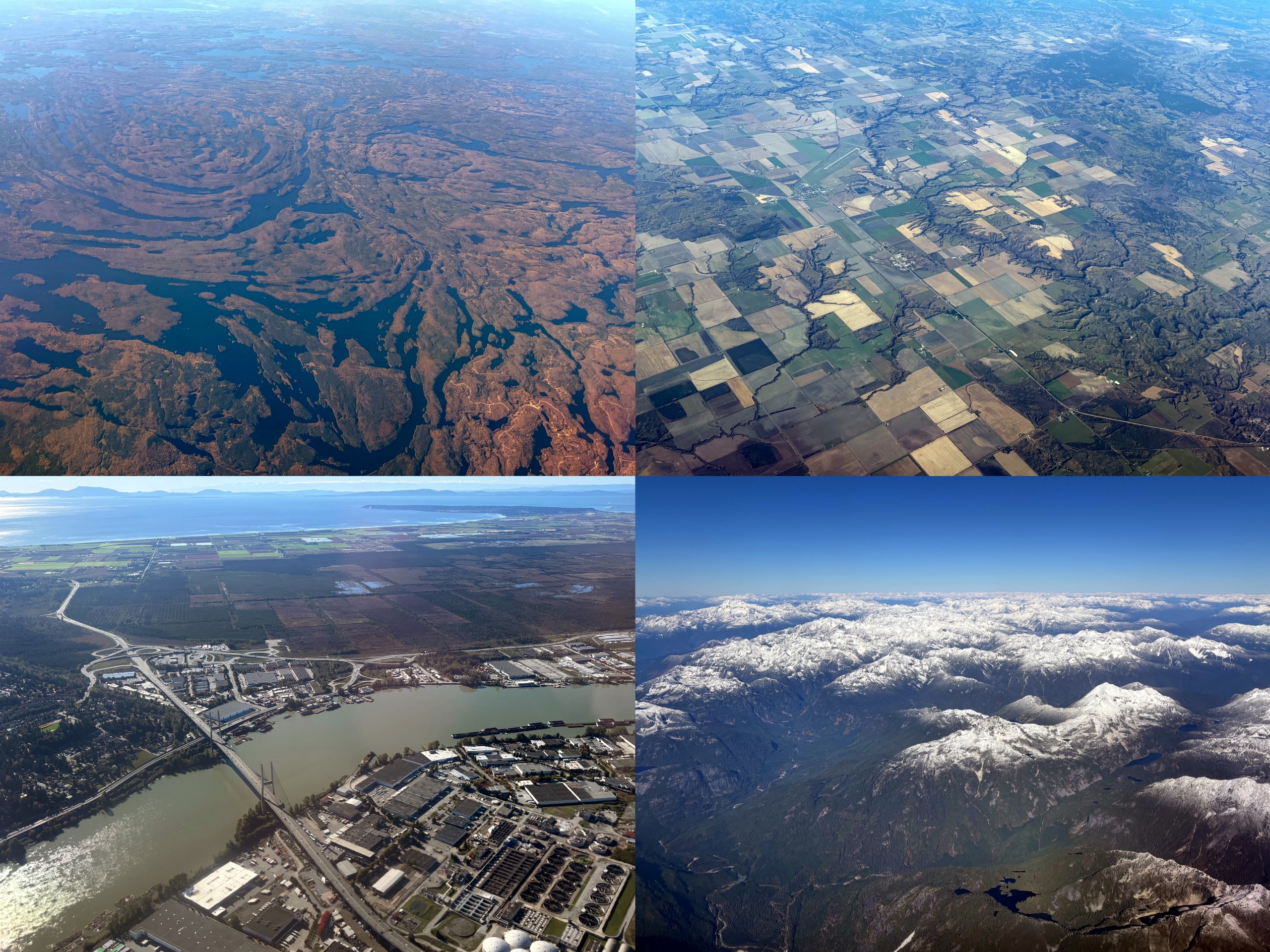
Canada, from the skies.
Funnily enough, there was no actual window at my window seat on the way to the nation’s capital. But on the way back, that small ticket promise was kept.
This week’s image(s): clicks from above, taken yesterday. When the clouds cleared and more importantly, when I was awake to take them. (I am not a morning person.)
Clockwise from the top left: the swirling earth of southern Ontario, the fractured fields of rural Saskatchewan, the white-tipped peaks of the Pacific Ranges, and the unusually uncrowded Alex Fraser Bridge.
-
Sunset on Parliament Hill
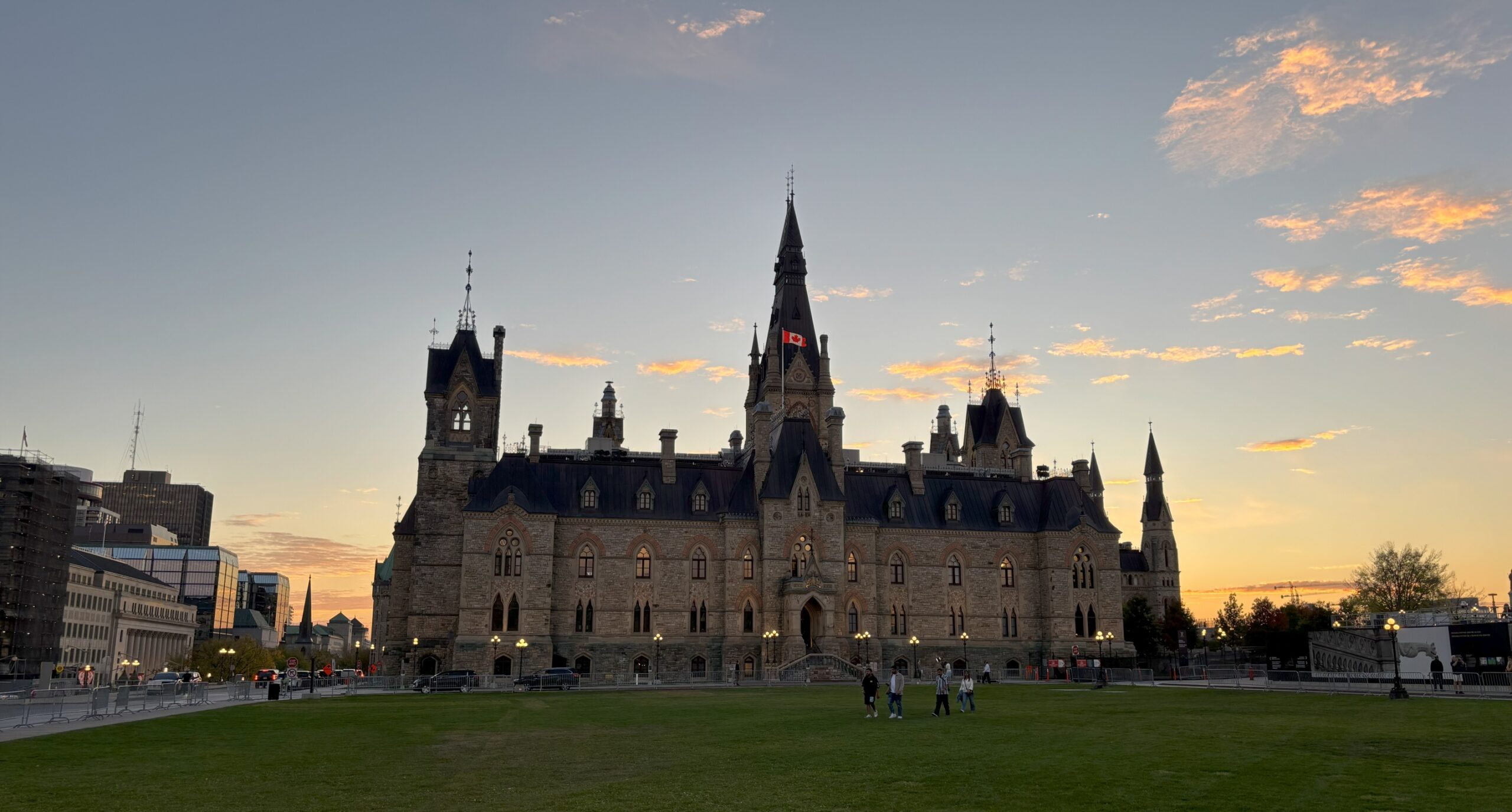 The lights are on…someone must be home. West Block, interim base of the House of Commons 06/10/25
The lights are on…someone must be home. West Block, interim base of the House of Commons 06/10/25I trundled about downtown Ottawa yesterday evening. Just had to take advantage of the warm temperatures before it cools off for the week. Somehow, it went up to 31 °C at one point—in October!
The gauge was still at 24 around 7pm as House proceedings adjourned (when this snap was taken). Sunset provides flattering lighting, no?
-
Topsy-turvy
 Things feel a little bit upside-down at the moment. San Francisco, 2015
Things feel a little bit upside-down at the moment. San Francisco, 2015 -
Macaque in Mumbai
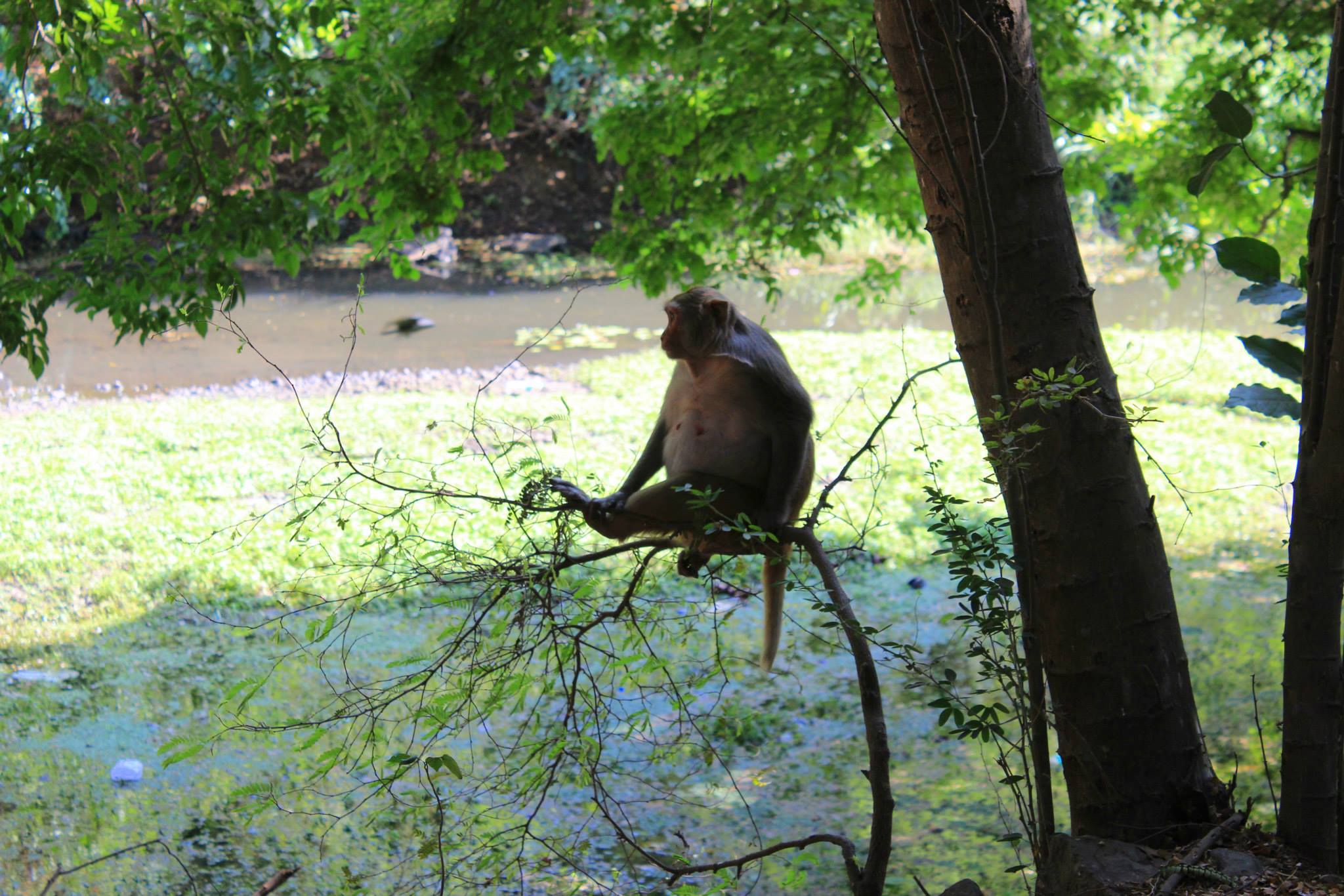 Life is a balancing act. A macaque in meditation, Sanjay Gandhi National Park, Mumbai. May 2014
Life is a balancing act. A macaque in meditation, Sanjay Gandhi National Park, Mumbai. May 2014 -
Running to No End
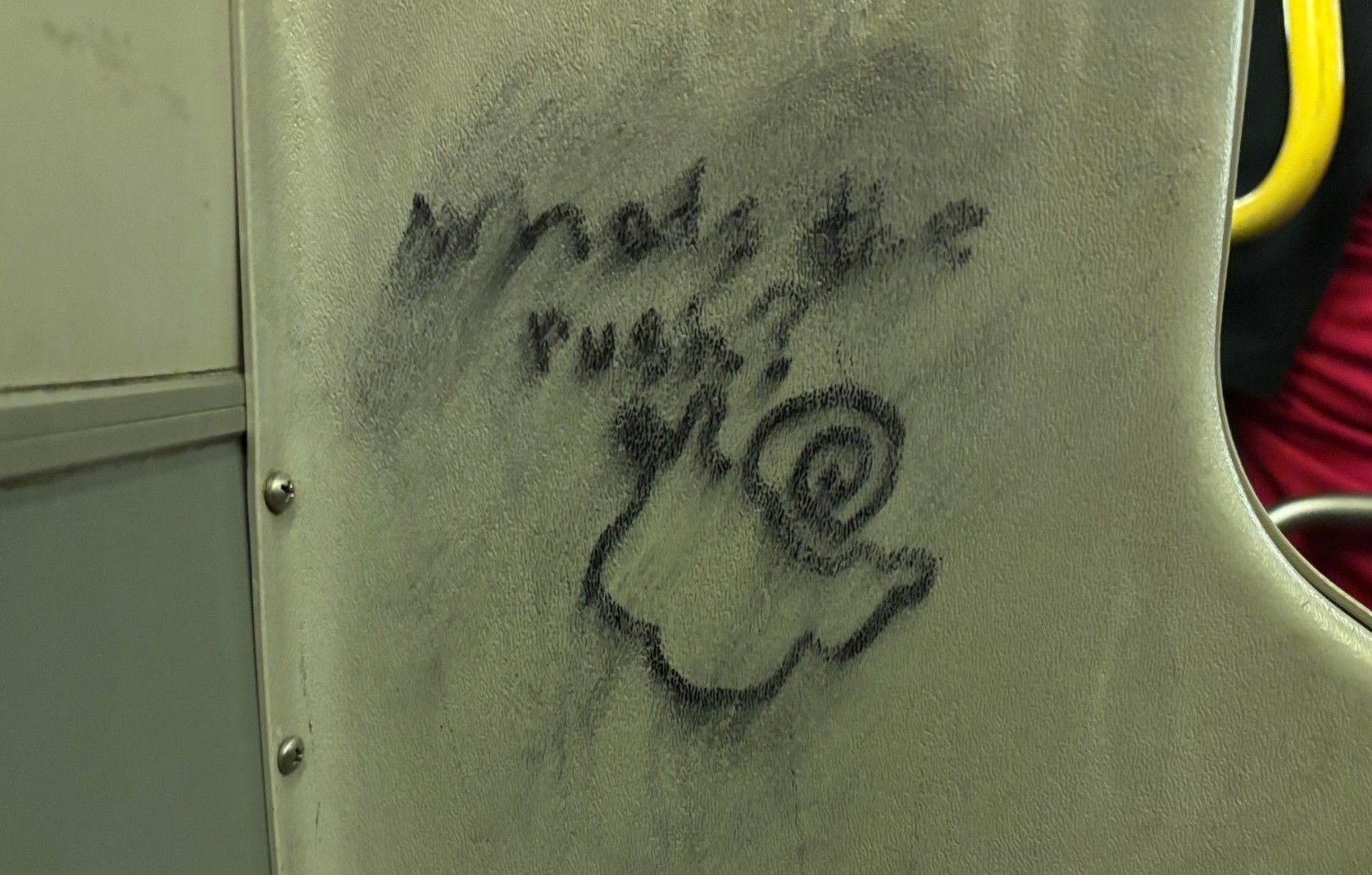 Graffiti seen during a late-night ride on Vancouver transit.
Graffiti seen during a late-night ride on Vancouver transit.A question I often ask.
A sentiment less expressed.
A disposition that too few share.
Impossible to run the rat race at a snail’s pace.